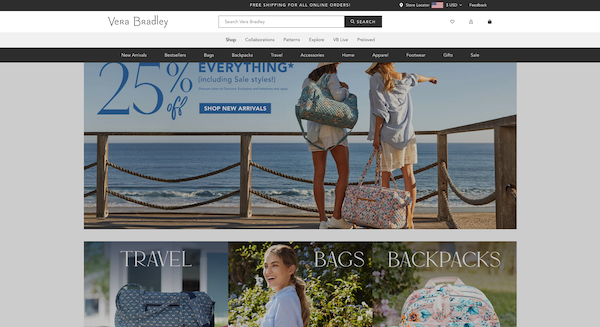
Online merchandising is a key e-commerce success factor. Limited screen real estate and short customer attention span mean e-commerce websites need to play their cards right or risk driving interested shoppers away. Great online merchandising means displaying the right products to the right people and presenting them in the best way possible.
Brands who sell on their own online channels exercise an amazing amount of control over their online merchandising. They oversee all aspects of how their products are presented online. By comparison, brands with a network of retailers get frustratingly low levels of control.
Anyone who purchases a product from your brand on a retail channel will have an experience that the retailer is largely shaping. Namely, the retailer manages many crucial elements about its website, including:
- Selecting which products to put up for sale
- Designing the product pages
- Implementing the search experience
- Creating product categories
- Setting prices and triggering promotions
- Controlling recommended products
- Writing transactional emails and newsletters
But merchandising doesn’t stop there, and trade marketers can do a lot to maximize their brand’s retail merchandising. Brands with the best overall merchandising gain an edge and may perform better than their competition — on retail sites and beyond.
Influencing retail merchandising as a brand: What you can do
Working with retailers, it is important to understand what you can and cannot influence. While page design and category creation are key, they’re usually strictly controlled by the retailers and not easy to influence as a brand.
On the other hand, brands can collaborate with retailers to optimize other merchandising dimensions. In this article, we’ll group them into four categories:
- Product selection and availability
- Price positioning and promotional activities
- Digital shelf presence and appearance
- Product content and reviews
Product selection and availability
A large part of merchandising, whether offline or online, is product placement. As a brand working with a number of retailers, you want to understand which products to place at which retailer. Are you trying to penetrate a new market with your tried-and-tested best sellers? Are you trying to go wide with your full catalog? How does your product selection compare to that of your competitors? Use the answers to these questions to build product lists and then work with your retailers to align the reality with the plan.
Availability is also a component of merchandising. Having in-stock products maximizes the odds of your products showing up in search results. On the other hand, frequent out-of-stocks could hurt brand perception. As a brand, you can measure the availability of your products at retailers and encourage healthy reordering habits, or even automation.
Price positioning and promotional activities
The price of a product interacts with many other factors: sales, profitability, brand perception, competitive positioning and even customer satisfaction. In an e-commerce environment, prices are usually displayed prominently. Shoppers can use filters to only see products around a given price point or sort products from least to most expensive.
Successful online merchandisers acknowledge the centrality of prices and use promotions strategically. While in most geographies, brands are not allowed to dictate retail prices, they can usually monitor and influence them. In an ideal world, prices are attractive to consumers, consistent between sales channels and profitable for all players involved.
Digital shelf presence and appearance
In physical stores, brand representatives negotiate vigorously with retail merchandisers to increase their share of shelf. It is about having as many facings as possible, as close to eye level as possible. In online retail, getting eyeballs on your products is just as crucial — and even more competitive.
Every retailer uses its own algorithm and systems to determine selections for critical placements such as homepage products, search results and recommended products. But that does not mean that these decisions sit entirely outside your control. Most algorithms sort products based on factors that you can influence, such as keyword presence in the product title or description, review scores, price point and sales velocity. Experienced online merchandisers know how to reverse-engineer their retailers’ systems to use them to their advantage.
Product content and reviews
Content and reviews might be the first things that people associate with online merchandising. Product content includes not only images, but also product titles, descriptions, videos, rich content (HTML) and specifications. Great content is visually appealing, informative, on brand and, most importantly, abundant. Keep in mind that content that performs well in a brand environment like your website may not be optimized for a retail environment.
Some trade marketers sometimes overlook product reviews, because they don’t really have a brick-and-mortar equivalent. But their importance in e-commerce cannot be overlooked. Many retailers highlight average star-rating in search results, so reviews influence not just conversion, but also product views. As a merchandiser, some tactics exist to optimize the reviews you receive. Experienced marketers also know to edit product content based on the feedback they receive in product reviews.
Brand Analytics is a retail channel performance solution for global brands. As a brand selling online through a network of retailers, it’s easy to feel that your products’ performance is beyond your control. ChannelAdvisor Brand Analytics provides a suite of tools for all levels of your organization to manage online retailers with performance in mind. Contact us today to request a demo.





